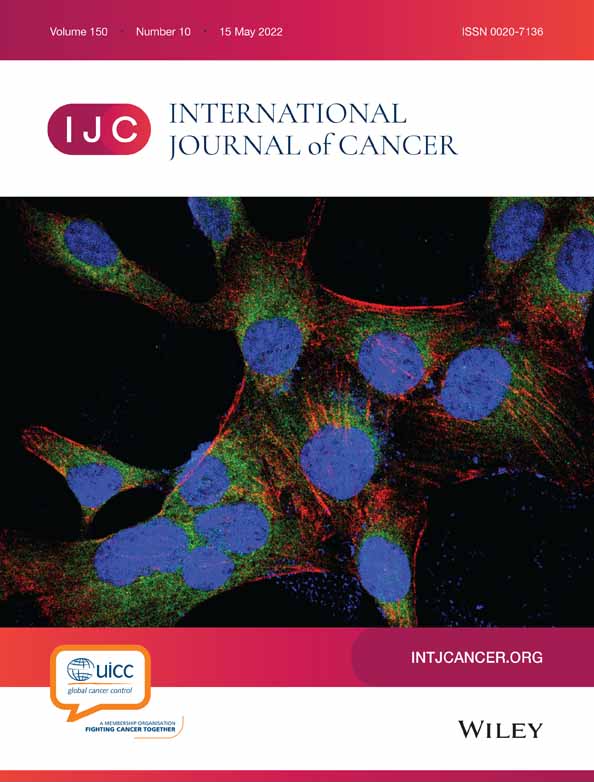Composite dietary antioxidant index and the risk of colorectal cancer: Findings from the Singapore Chinese Health Study
Funding information: The Singapore Chinese Health Study was supported by the National Institutes of Health (NIH) of the United States (grants # R01 CA144034 and UM1 CA182876; PI: Jian-Min Yuan). Hung N. Luu is partially supported by the University of Pittsburgh Medical Center Hillman Cancer Center start-up grant. Woon-Puay Koh is supported by the National Medical Research Council, Singapore (MOH-CSASI19nov-0001). Pedram Paragomi was supported by the NIH T32CA186873 (PI: Jian-Min Yuan) training grant in cancer epidemiology and prevention.
Abstract
Colorectal cancer (CRC) is a major contributor to cancer death globally. Several studies showed some protections by certain individual dietary antioxidants against CRC development. Epidemiologic data on the composite dietary antioxidant index (CDAI) in relation to CRC risk are sparse. Using the Singapore Chinese Health Study, an ongoing prospective cohort consisting of 61 321 cancer-free participants aged 45 to 74 years at baseline, a food-based CDAI was calculated according to a previously established and validated method that included six food-sourced antioxidants including vitamins A, C and E, manganese, selenium and zinc. Cox proportional hazard regression method was used to estimate the hazard ratios (HRs) and their 95% confidence intervals (CIs) for CRC associated with various levels of CDAI with adjustment for multiple potential confounders. After an average of 17.5 years of follow-up, 2140 participants developed CRC. HRs (95% CIs) of CRC for quartiles 2, 3 and 4 of CDAI were 0.94 (0.83-1.07), 0.86 (0.75-1.00) and 0.80 (0.66-0.98), respectively, compared to the lowest quartile (Ptrend = .02). This inverse association between CDAI and CRC risk was more apparent in women or those without a history of diabetes, without family history of CRC, never smokers or overweight/obese individuals. However, none of the heterogeneity tests for the CDAI-CRC risk association reached statistical significance. Our findings suggest that food-based antioxidants may be beneficial for reducing the risk of CRC in the general population.
Abstract
What's new?
Epidemiological studies on individual dietary antioxidants such as vitamins and minerals and the risk of colorectal cancer have produced inconsistent results. In this large prospective Asian cohort study, the authors apply a recently developed composite dietary antioxidant index (CDAI) that includes vitamins A, C and E, manganese, selenium and zinc. The analysis shows that a higher CDAI is associated with a lower risk of developing CRC overall. These findings support the notion that food-based antioxidants may offer a beneficial effect and provide a potential strategy for the primary prevention of colorectal cancer.
CONFLICT OF INTEREST
No conflict of interest was declared by any authors.
Open Research
DATA AVAILABILITY STATEMENT
De-identified data relevant to the report will be available for sharing upon request through the University of Pittsburgh for researchers who meet the criteria for access to confidential data. Data are accessible to the corresponding author and also are available from the University of Pittsburgh Institutional Data Access/Ethics Committee with the following contact information: 3500 Fifth Avenue, Hieber Building Main Office, Suite 106 Pittsburgh, PA 15213. Main Phone: (412) 383-1480. Main Fax: (412) 383-1508. Email: [email protected].




